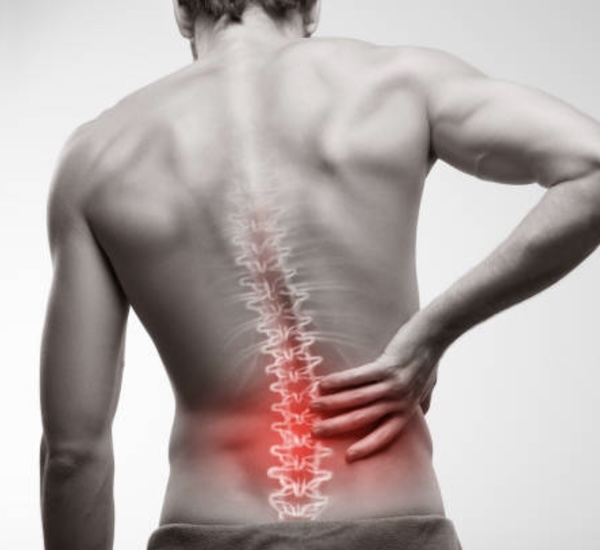
What is Lower Back Pain?
Lower back pain refers to discomfort or stiffness in the area between the bottom of the ribcage and the top of the legs. It’s one of the most common musculoskeletal complaints, affecting people of all ages and lifestyles. The pain can range from a dull, constant ache to a sudden, sharp sensation that limits movement.
Lower back pain may be acute (short-term) or chronic (lasting longer than 3 months) and often affects daily activities, sleep and overall quality of life.
What causes Lower Back Pain?
Lower back pain can result from a variety of physical, mechanical, and lifestyle-related factors. Some of the most common causes include:
- Poor posture while sitting or standing
- Muscle or ligament strain due to heavy lifting or awkward movements
- Degenerative disc conditions like lumbar spondylosis
- Herniated or slipped discs
- Sedentary lifestyle and weak core muscles
- Stress and mental tension, which can lead to muscular tightness
In some cases, underlying conditions like arthritis, kidney problems or spinal abnormalities can also trigger pain in the lower back region.
What are the symptoms of Lower Back Pain?
The symptoms of lower back pain may vary depending on the cause and severity. Common signs include:
- Persistent ache or stiffness in the lower back
- Sharp or stabbing pain after physical activity or injury
- Pain that radiates to the hips, buttocks or legs (sciatica)
- Muscle spasms or limited range of motion
- Increased discomfort when sitting, standing or walking for long periods
How is Lower Back Pain diagnosed?
Lower back pain is diagnosed through a combination of:
- Medical history evaluation – Understanding past injuries, lifestyle habits and symptoms
- Physical examination – Checking posture, range of motion and nerve function
- Imaging tests – X-rays, MRI or CT scans may be recommended if structural issues like disc herniation or arthritis are suspected
What are the treatment options for Lower Back Pain?
Treatment depends on the underlying cause and severity. Common options include:
- Rest and gentle stretching for acute pain
- Pain relievers or muscle relaxants for short-term relief
- Physical therapy and core strengthening exercises
- Postural correction and ergonomic adjustments
- Heat and cold therapy
- Chiropractic adjustments or osteopathic care
In rare cases, when conservative methods fail, injections or surgical intervention may be considered.
What lifestyle changes can help prevent Lower Back Pain?
Preventing lower back pain often involves simple, sustainable changes in daily habits, such as:
- Maintaining a healthy weight to reduce strain on the spine
- Strengthening abdominal and back muscles
- Using ergonomic chairs and proper posture while sitting or working
- Lifting objects correctly – using the knees, not the back
- Staying active with regular low-impact exercises like walking, swimming or yoga
Is there an Ayurvedic treatment for Lower Back Pain?
Yes, Ayurveda offers a highly effective and holistic approach to managing lower back pain by addressing both the symptoms and underlying causes through balancing the Vata dosha, which governs movement and nerve function.
Common Ayurvedic Treatments for Lower Back Pain Include:
- Kati Basti – A localized therapy where warm medicated oil is held on the lower back to relieve stiffness, nourish tissues and reduce inflammation.
- Abhyanga (Oil Massage) – Promotes circulation, relaxes tight muscles and calms the nervous system.
- Basti (Medicated Enema) – Especially beneficial for Vata imbalance, helping to eliminate toxins and relieve chronic lower back pain.
- Herbal Medications – Use of herbs like Rasna, Ashwagandha, Dashamoola, Shallaki and Guggulu to reduce inflammation, strengthen joints and soothe nerves.
- Panchakarma Detox – A full-body Ayurvedic detox that supports long-term spinal health and pain relief.
- Diet and Lifestyle Counseling – Focusing on warm, nourishing foods and routines that balance Vata and support healing.